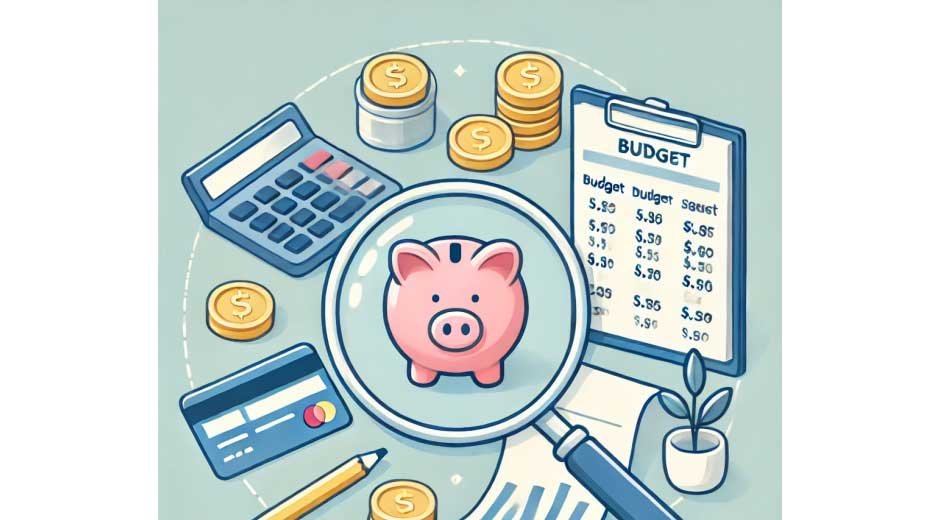In an ever-changing financial landscape, even the smallest shifts in budgeting strategies, spending habits, or saving techniques can have ripple effects. Managing these fluctuations smartly can lead to long-term stability without requiring drastic measures. As life presents unexpected costs or unplanned events, preparation and flexibility become indispensable tools for staying on course. Here’s how subtle adjustments in personal finance can help you navigate unpredictability effectively.
Understanding the Power of Incremental Savings
Often, people view savings as a monumental endeavor requiring large sacrifices, but in truth, minor and consistent changes yield impressive results over time. For example, redirecting small, habitual expenses—like daily coffee purchases or impulsive streaming subscriptions—toward a savings account builds financial reserves quietly but steadily. The compounding impact of these small shifts isn’t always obvious at first but proves valuable during emergencies.
One often-overlooked trick is automating transfers into savings accounts. Set a fixed amount to be withdrawn from your paycheck the moment it hits your bank account. This method not only encourages discipline but also turns saving into an unconscious habit.
Prioritizing an Emergency Fund Over Investments
When faced with limited funds, many people jump into high-yield investment opportunities before securing their financial safety net. An emergency fund, however, acts as a foundational layer of protection and is typically the better first step. It helps prevent taking on unnecessary debt when surprise expenses occur, such as unexpected medical bills or urgent home repairs.
Consider starting with three to six months’ worth of living expenses in a highly liquid account. Though it may not be as exciting as an aggressive stock portfolio, having this buffer keeps you from depleting long-term investments or relying on alternative financial products when challenges arise.
Balancing Debt Repayment with Lifestyle Needs
Managing debt is a critical aspect of financial health, but the method you choose can make a significant difference. Many people fall into the trap of aggressively paying off all debt as quickly as possible at the expense of their current lifestyle. While this may seem like a noble approach, overly strict repayment plans can lead to burnout and, in some cases, cause individuals to rely on temporary financial fixes to meet everyday expenses.
A more effective strategy involves balancing debt repayment with personal well-being. Evaluate whether paying off high-interest debt should be prioritized while still leaving room for modest discretionary spending. For example, if credit card interest rates are dragging down your financial progress, making them the focus while reducing, but not eliminating, leisure expenses can be a practical compromise.
Understanding Credit as a Tool, Not a Burden
Credit often carries negative connotations, but when used wisely, it can serve as a valuable financial tool. Building and maintaining good credit is essential for accessing favorable loan terms on major purchases such as homes or vehicles. Even if you’re not planning on large purchases soon, credit history affects everything from rental applications to insurance rates.
Strategically using credit cards to pay for monthly expenses while paying off the balance in full each month is one way to build a solid credit score without incurring interest. Meanwhile, staying within 30% of your credit limit signals responsible usage to lenders.
In cases where financial flexibility is crucial, carefully evaluated borrowing options may come into play. Some people turn to payday loans during emergencies when immediate cash is necessary. While these loans can provide short-term relief, they should be approached with caution and used only when more cost-effective alternatives aren’t viable.
Subtle Spending Audits: Spotting Invisible Drains
Sometimes, financial instability arises not from large purchases but from the “invisible drains” in everyday spending. These drains could be recurring subscription services you forgot to cancel, dining out multiple times per week, or high utility bills you haven’t optimized.
Conducting a personal spending audit every few months can reveal areas where minor changes lead to significant savings. Look for patterns in your credit card statements or bank transactions. Are there small expenses adding up over time? By trimming excess costs, you can redirect funds toward debt repayment or savings goals.
Leveraging Community Resources and Financial Counseling
Navigating financial challenges doesn’t always have to be a solo journey. Many communities offer free or low-cost financial counseling services that can help identify effective solutions tailored to individual circumstances. These services often provide guidance on managing debt, creating sustainable budgets, and improving credit scores.
Additionally, local workshops on financial literacy may reveal creative savings tactics or overlooked support programs that can lighten financial burdens. Seeking advice can be particularly helpful when considering long-term decisions like purchasing a home or paying for higher education.
Building Income Streams Beyond Traditional Employment
Diversifying income streams has become a popular financial strategy, especially in an age where gig work, freelancing, and digital side hustles are readily accessible. Relying on a single paycheck leaves you vulnerable to sudden job loss or salary cuts, but supplemental income adds a layer of security.
Think about monetizing skills you already have or exploring remote opportunities that don’t require significant startup costs. Online tutoring, freelance writing, or selling handmade crafts on digital marketplaces are examples of accessible income streams.
However, it’s important to avoid overextending yourself. Ensure that any additional work complements, rather than interferes with, your main job and personal life.
Staying Ahead of Inflation with Dynamic Budgeting
One of the most insidious threats to financial stability is inflation, which quietly erodes purchasing power over time. A static budget from five years ago likely won’t cover today’s living costs. To combat this, review and adjust your budget annually, factoring in inflation rates and changing expenses.
Dynamic budgeting involves allocating more funds to essential categories, such as food and housing, while identifying areas where discretionary spending can be reduced. It’s a balancing act that ensures you stay ahead of rising costs without compromising long-term goals.
The Psychological Aspect of Financial Success
Beyond numbers and spreadsheets, financial stability is deeply tied to mindset. Emotional spending, anxiety around money, and fear of the future can hinder progress if left unchecked. Building financial resilience often involves addressing these psychological barriers head-on.
Simple practices like setting small, achievable goals or celebrating milestones can keep you motivated. Mindfulness exercises and visualizing long-term outcomes also play a role in maintaining financial discipline.
The Journey of Adaptation
Personal finance is less about perfection and more about adapting to changing circumstances. Life events, market conditions, and unexpected emergencies will continue to arise, but with the right strategies in place, they become manageable rather than overwhelming.
By understanding the subtle shifts that make the biggest impact—whether through disciplined saving, debt management, or strategic spending—you can build a foundation of resilience. Staying informed, proactive, and flexible ensures that financial setbacks remain temporary, allowing you to bounce back stronger every time.
As financial landscapes evolve, so does the need to find tailored solutions to fit individual needs. Approaching each situation thoughtfully can help you navigate unpredictable challenges while steadily progressing toward financial independence.









